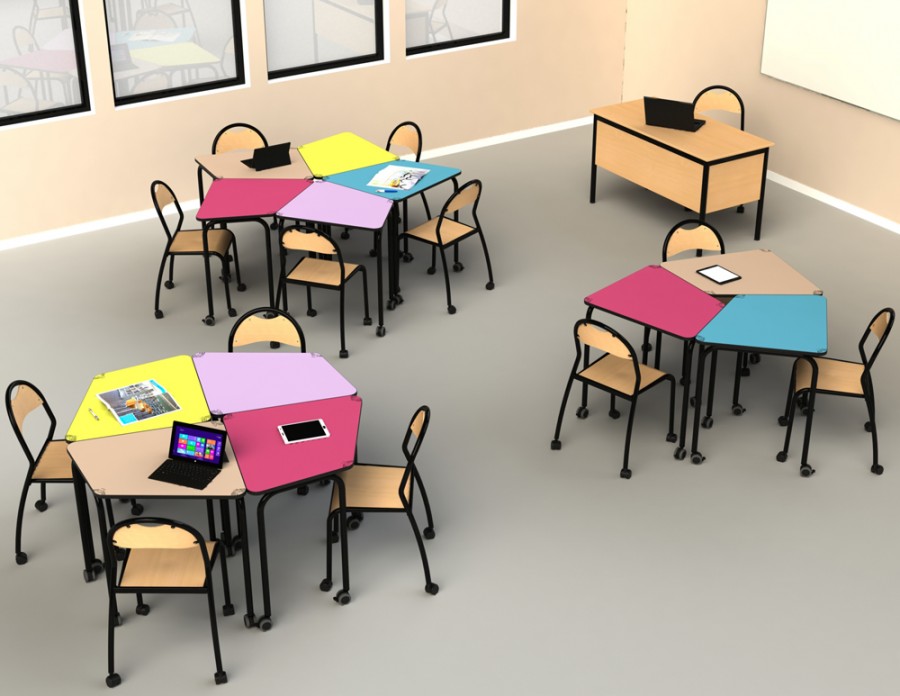Group work is the latest teaching trend. Alternating between traditional and dynamic teaching phases makes it easier to capture and retain the pupils’ attention. But over and above these methods and initiatives, the time has come to rethink classroom design. More mobility and flexibility for better interactivity.
How to improve interactivity in a classroom?
At the beginning of the year, primary and secondary school teachers try to arrange their classroom according to their objectives, according to the subject taught of course, but also according to the relationship they want to establish with the pupil. They often hesitate between a traditional classroom layout and a more original layout, which promotes interactivity between pupils.
These can be islands or groups of tables allowing pupils to face each other, and to interact effortlessly.

The problem is that classrooms cannot adopt this kind of layout on a permanent basis. At the same time, the school furniture, which is often antediluvian, does not allow this modularity that allows classroom layouts to be changed at a whim. Changing the layout takes time and tends to be very noisy!
Classrooms are becoming modular thanks to the Program 3.4.5.
IA France, in conjunction with the design agency C+B Lefebvre, has come up with a range of modular school furniture to allow a host of classroom layouts.
Easily create groups of 3, 4 or 5 students, but also groups of 6, 9, 12, etc., arrange your classroom in a more traditional way, as a lecture theatre, or encourage individual work by separating each table.
Look at the video:
A new generation of school furniture, which promotes group work and comes in contemporary colours to keep pupils hanging onto every word!
